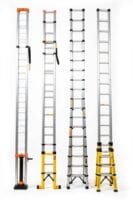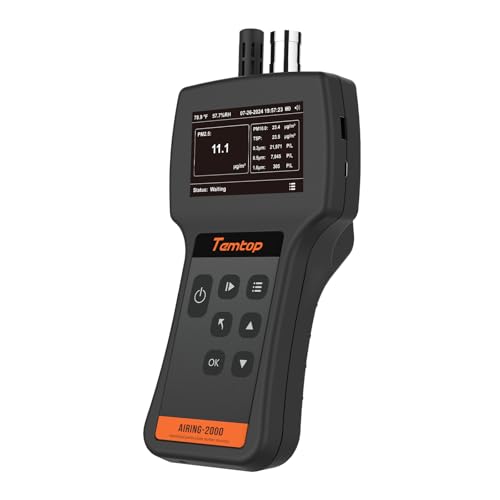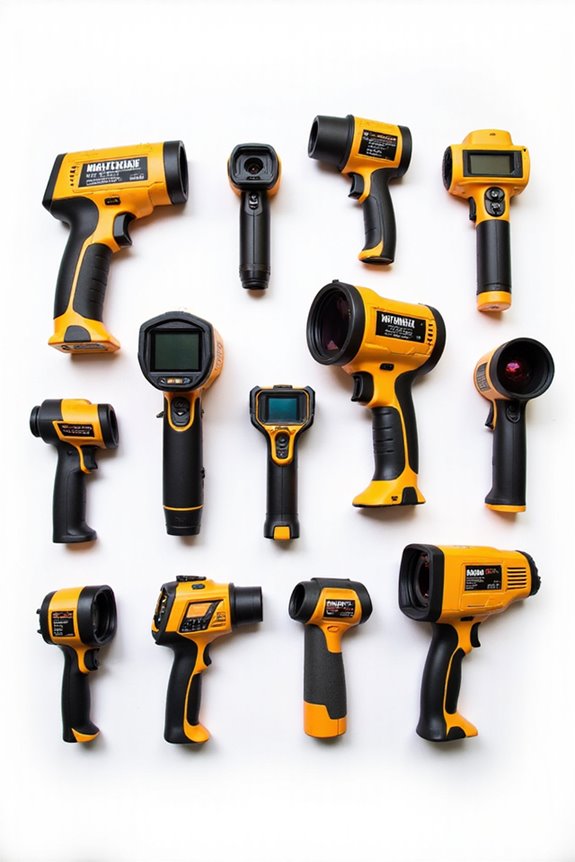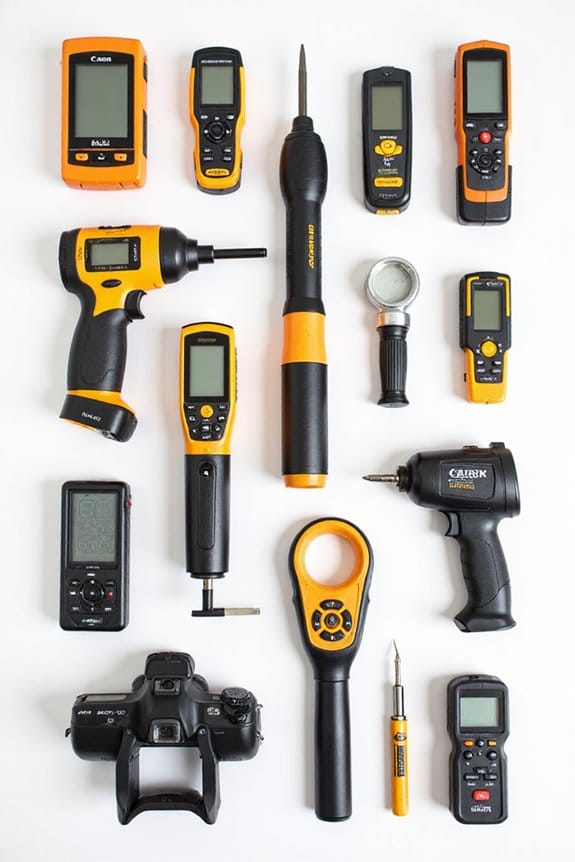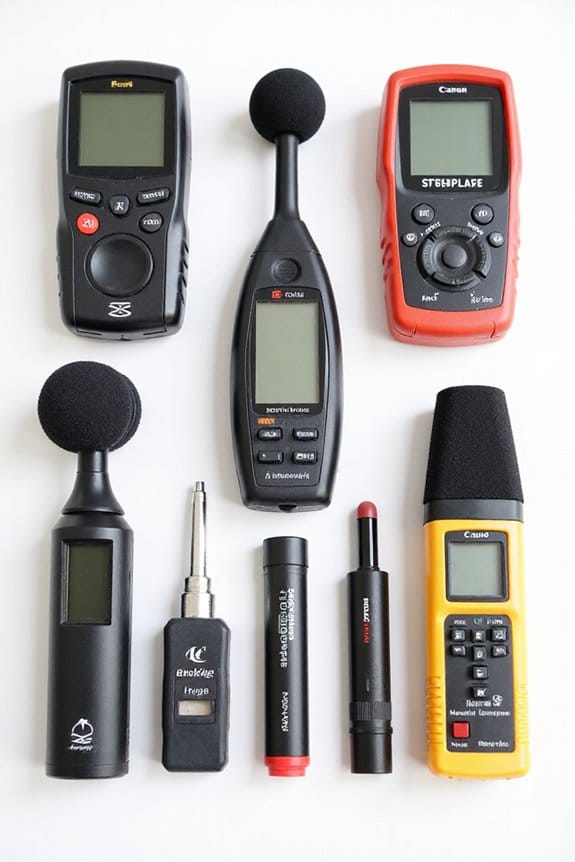As an Amazon Associate, we earn from qualifying purchases. Some links may be affiliate links at no extra cost to you. Although our opinions are based on curated research, we haven't used these products. Articles generated with AI.
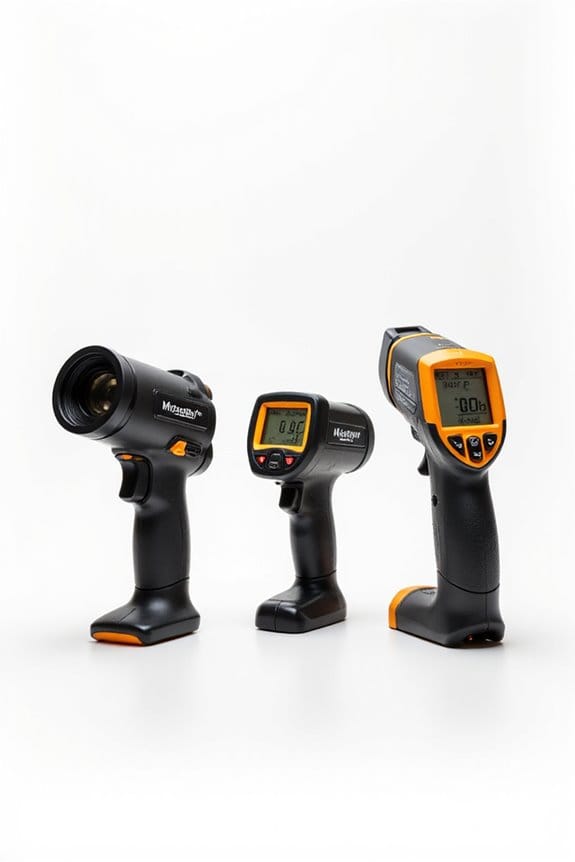
The 3 Best Humidity Measurement Instruments for Accurate Indoor Climate Control
Looking for the top humidity measurement instruments for indoor climate control? Here are three fantastic picks: 1) Pgzsy Mini Digital Humidity Meters – these compact meters offer real-time readings every 10 seconds. 2) Soil pH Meter 3-in-1 Tester – this handy tool measures soil moisture, pH, and sunlight, perfect for plant lovers. 3) Temtop Handheld Particle Counter – it tracks particulate levels, plus temperature and humidity. Stick around, and you’ll uncover even more helpful tips!
Key Takeaways
- Accuracy and Calibration: Select instruments with at least ±5% RH accuracy and regular calibration options to ensure trustworthy indoor climate readings.
- Real-Time Updates: Opt for devices that provide temperature and humidity readings every 10 seconds for timely monitoring of changing indoor conditions.
- Multi-Functional Features: Consider models that measure both temperature and humidity along with other environmental factors, enhancing versatility for various applications.
- User-Friendly Design: Choose meters with clear displays and intuitive controls for easy navigation and quick reading interpretations.
- Power Source Considerations: Weigh battery-operated, plug-in, and solar-powered options based on your usage needs and convenience for uninterrupted monitoring.
Pgzsy Mini Digital Temperature Humidity Meters (12 Pack)
Sale
12 Pack Pgzsy Mini Small Digital Electronic Temperature Humidity Meters Gauge Indoor Thermometer...
- Mini Digital Humidity Thermometer allows you to easily know the environment temperature and humidity around you
- 2in1 meter with built-in probe; digital electronic thermometer and hygrometer for measuring temperature and humidity for indoor use
- Fahrenheit (°F) display, this thermometer displays temperature in Fahrenheit
If you’re on the lookout for an affordable and practical solution to monitor indoor humidity and temperature, the Pgzsy Mini Digital Temperature Humidity Meters (12 Pack) might just be your best bet. These compact 2-in-1 meters serve as both thermometers and hygrometers, measuring conditions every 10 seconds.
- Versatile Use: Perfect for mason jars or 3D printing filament storage.
- Decent Range: They display temperatures from -58℉ to 158℉.
- Accuracy: Expect about ±2℉ for temperature and ±5%RH for humidity.
While some users report inconsistencies, if you need casual measurements, you’ll probably find these handy!
Best For: Individuals seeking an affordable and compact solution for casual monitoring of indoor temperature and humidity levels.
Pros:
- Versatile Use: Suitable for various applications, including mason jars and 3D printing filament storage.
- Wide Temperature Range: Displays temperatures from -58℉ to 158℉, accommodating diverse environments.
- Cost-Effective: Offers good value for budget-conscious users needing basic temperature and humidity measurements.
Cons:
- Accuracy Issues: Some units show significant variance in humidity readings, which may not be reliable for critical applications.
- Quality Control Problems: Reports of defective units and inconsistent performance have been noted by users.
- Calibration Concerns: Readings may not match those of more sophisticated devices, raising questions about their precision.
Soil pH Meter 3-in-1 Tester for Garden and Plant Care
Sale
SONKIR Soil pH Meter, MS02 3-in-1 Soil Moisture/Light/pH Tester Gardening Tool Kits for Plant Care,...
- Kindly NOTE: This soil tester can not be applied to test pH value of any other liquid. If the soil is too dry the indicator will not move, and water it before testing.
- 3 METERS IN ONE: Soil moisture level, Soil pH value and Sunlight level could be tested easily according to your need by switching the function button of this soil meter.
- NO BATTERY NEEDED: Simply insert the meter into soil, wait few minutes, accurate test results will be displayed on the readout panel. No battery is needed.
The Soil pH Meter 3-in-1 Tester is a fantastic choice for both seasoned gardeners and beginners alike, making it a must-have for anyone serious about their plant care. Here’s why you’ll love it:
- Versatile Measurements: It checks soil moisture, pH, and sunlight levels—all in one handy device.
- User-Friendly: No batteries needed! Just insert the probes into your soil and get instant readings.
- Durable Design: Built to last, users report years of reliable performance if cared for correctly.
Remember to clean the probes after each use, and you’ll keep your garden thriving. It’s an affordable investment that pays off big time!
Best For: Anyone serious about plant care, from novice gardeners to experienced horticulturists.
Pros:
- Measures soil moisture, pH, and sunlight levels in one device for convenience.
- No batteries required, providing instant readings with simple insertion.
- Durable construction offers reliable performance over years of use.
Cons:
- Moisture readings can sometimes be inconsistent, affecting accuracy.
- Light measurement may require direct sunlight for reliable results.
- May not perform optimally with all soil types, limiting versatility.
Temtop Handheld Particle Counter
Temtop Handheld Particle Counter 0.3µm, 0.5µm, 1.0µm Particulate Monitor PM2.5, PM10, TSP, Temp &...
- Advanced Monitoring Capabilities: Offers precise measurement of various particulate sizes 0.3µm, 0.5µm, 1.0µm and key air quality indices like PM2.5, PM10, and TSP,...
- Comprehensive Sensor Suite: Integrates temperature and humidity sensors alongside particulate monitoring for a holistic view of environmental conditions.
- User-Friendly Interface: Features a large, clear display and straightforward button controls, making operation intuitive for users of all levels.
Looking for a reliable way to gauge air quality on the go? Meet the Temtop Handheld Particle Counter. Here’s what makes it stand out:
- Particle Measurement: It measures sizes like 0.3µm, PM2.5, and PM10, giving you accurate data.
- Integrated Sensors: It checks temperature and humidity, providing a full picture of your environment.
- User-Friendly Design: The large display and simple controls mean anyone can use it easily.
- Power and Storage: Enjoy 4+ hours of battery life and 32GB for data logging.
Just be aware—you might wish for VOC measurements next time!
Best For: The Temtop Handheld Particle Counter is best for individuals or professionals seeking accurate and portable air quality monitoring on the go.
Pros:
- Accurate Measurements: Provides reliable data on particulate sizes and environmental conditions.
- User-Friendly Design: Features a large display and intuitive controls for easy operation.
- Extended Battery Life: Offers over 4 hours of continuous use with 32GB for extensive data logging.
Cons:
- Lacks VOC Measurement: Does not measure volatile organic compounds, which may limit comprehensive air quality assessments.
- Limited Advanced Features: Some users may want additional metrics beyond basic particulate measurement.
- Potential for Overkill: May be more sophisticated than needed for casual users simply wanting a basic air quality check.
Factors to Consider When Choosing Humidity Measurement Instruments
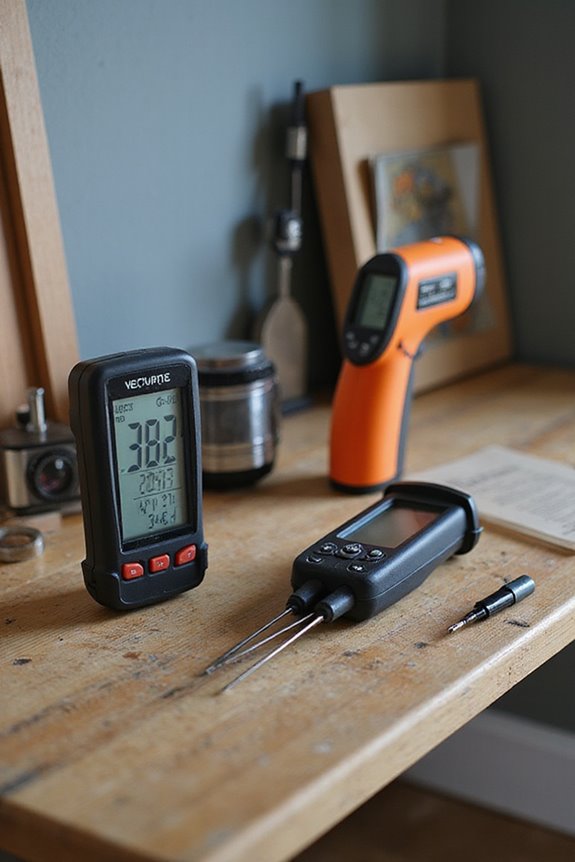
When you’re choosing humidity measurement instruments, you’ll want to keep a few key factors in mind. First, consider the accuracy you need—because who wants a tool that ranges wildly in its readings? Next, think about the temperature and humidity range, ease of use, portability, and how versatile the instrument is for different applications.
Measurement Accuracy Requirements
Choosing the right humidity measurement instrument can feel like a challenging task, especially since measurement accuracy plays a critical role in various applications. Here are some key points to take into account:
- Accuracy Range: Most humidity meters offer accuracy between ±2-8% RH. For critical tasks, aim for tighter tolerances.
- Application Needs: General use might be fine with ±5% RH. Still, if you’re curing cannabis, even a slight deviation can lead to mold—yikes!
- Calibration: Regularly calibrating your meter against trusted references guarantees reliable readings.
- Environmental Factors: Be mindful that temperature variations and where you place the meter can skew your results.
Taking the time to choose wisely can save you from frustrating errors down the line!
Temperature and Humidity Range
Understanding the temperature and humidity range of a measurement instrument is essential for ensuring you get accurate data in your specific environment. Here are a few key factors to evaluate:
- Humidity Range: Most indoor instruments measure between 10% to 99% Relative Humidity (RH). Pick one that fits your needs!
- Temperature Range: You’ll typically find ranges from -58°F to 158°F. Make sure it works for your space.
- Reading Frequency: Look for devices that take measurements regularly, like every 10 seconds, to keep you informed on changes.
- Accuracy: Aim for humidity readings with a ±5% RH deviation and temperature accuracy around ±2°F for reliable results.
With these tips, you’ll stay ahead of indoor climate control like a pro!
Ease of Use
How do you guarantee that your humidity measurement instrument isn’t just accurate, but also easy to use? Here are some tips:
- Clear Display: Look for instruments with easy-to-read screens. This helps prevent confusion when checking data.
- Quick Readings: Choose models that provide updates every few seconds to keep you informed about humidity changes.
- User-Friendly Controls: Go for intuitive buttons or simple interfaces that everyone can navigate without a tutorial.
- Battery-Free Operation: Opt for devices that rely solely on sensor technology. They’re usually hassle-free and ready for everyday use.
Portability and Design
When you’re on the hunt for a good humidity measurement instrument, portability and design are key factors that can really make or break your experience. Here’s what to take into account:
- Size and Weight: Compact and lightweight tools are easier to carry around, whether you’re at home or outside.
- User-Friendly Display: Look for clear displays and simple controls, so anyone can snag accurate readings without a science degree.
- Power Source: Opt for battery-less models if you want to ditch battery hassles and enjoy convenient mobility.
- Durability: A sturdy build and ergonomic design guarantee your instrument lasts while remaining comfy to handle.
- Accessories: Carrying cases not only protect your gear but keep everything organized. Who doesn’t love a tidy toolkit?
Application Versatility
Choosing the right humidity measurement instrument isn’t just about picking one off the shelf; it’s all about how versatile it is for your specific needs. Here are some factors to evaluate:
- Application Range: Look for instruments that adapt to various environments, like indoor gardening or incubators.
- Humidity Range: Opt for devices that measure between 10% to 99% RH to cover most situations.
- Multi-Functionality: Choose instruments that gauge both temperature and humidity to maximize usability.
- Update Frequency: Instruments that deliver readings every 10 seconds help you track changes in real time.
- Accuracy: Verify the tool’s accuracy matches your requirements, as discrepancies can impact critical applications.
Power Source Options
Looking at the power source options for humidity measurement instruments is essential, especially if you want reliability without the hassle of constant battery changes. Here are a few power sources to contemplate:
- Battery-Powered: Great for portability but remember, regular replacements or recharging can be a bit of a chore.
- Plug-In Power Source: Perfect for stationary setups. You’ll enjoy continuous operation—no battery worries here!
- Solar-Powered: Eco-friendly and ideal for outdoor use, especially when the sun’s shining bright.
- Analog Hygrometers: These gems don’t need any power at all, relying on good old mechanical magic!
When selecting, think about how often you’ll use the device and whether portability is a priority—your future self will thank you!
Budget Considerations
Budget considerations play an essential role in selecting the right humidity measurement instruments, especially since prices can vary widely. Here are a few factors to guide your decision:
- Price Range: Basic models start under $10, but advanced devices can cost several hundred.
- Accuracy Matters: Cheaper meters may give inaccurate readings, risking plant health or damage to sensitive items.
- Bang for Your Buck: Investing in quality can save you money in the long run with fewer errors.
- Multiple Locations: If you need several meters, consider buying a bulk pack of affordable options instead of splurging on high-end models.
- Maintenance Costs: Don’t forget to factor in calibration and replacement parts for some devices.
Choose wisely!
Frequently Asked Questions
How Do I Calibrate My Humidity Measurement Instrument?
Calibrating your humidity measurement instrument is like tuning a guitar. You want it to sound just right! Here’s how you can do it:
- Gather a reliable reference, like a hygrometer known for accuracy.
- Place both devices in the same environment for a few hours.
- Compare the readings. Adjust your instrument according to the reference.
- Consider doing this monthly for best results. Happy calibrating! It’s easier than you think!
What Is the Ideal Humidity Range for Indoor Comfort?
The ideal humidity range for indoor comfort is between 30% and 50%. Here’s why:
- Health: This range helps reduce allergens and irritants.
- Comfort: It keeps you feeling cozy without making you feel sticky.
- Preservation: Protects furniture and walls from damage.
When humidity dips below or exceeds this range, it can feel discomforting. So, keep an eye on those levels for a happy home environment!
Can Humidity Meters Be Used Outdoors?
Yes, humidity meters can be used outdoors, but there are some things to take into account. Here’s a quick breakdown:
- Durability: Make sure your meter’s designed for outdoor use. Look for weatherproof options.
- Calibration: Outdoors, humidity can fluctuate a lot. Regular calibration helps maintain accuracy.
- Placement: Avoid direct sunlight to prevent heat interference.
How Often Should I Replace My Humidity Measurement Instrument?
Think of your humidity meter as a trusty steed; it gets you where you need to go, but it can get worn out. You should replace your humidity measurement instrument every 3 to 5 years for peak accuracy. Here’s a quick guide:
- Check Accuracy: If it’s giving inconsistent readings, time for a new one!
- Physical Damage: Cracks or water damage? Definitely replace it.
Keep that climate in check!
Are There Specific Humidity Meters for Wine Cellars?
There are specific humidity meters designed for wine cellars. Here’s what you need to know:
- Accuracy: Look for models that read within 1-2% accuracy.
- Range: Choose meters with a range of 50-70% humidity, perfect for wine storage.
- Features: Consider digital displays for easy reading and alerts if levels drop or rise.



